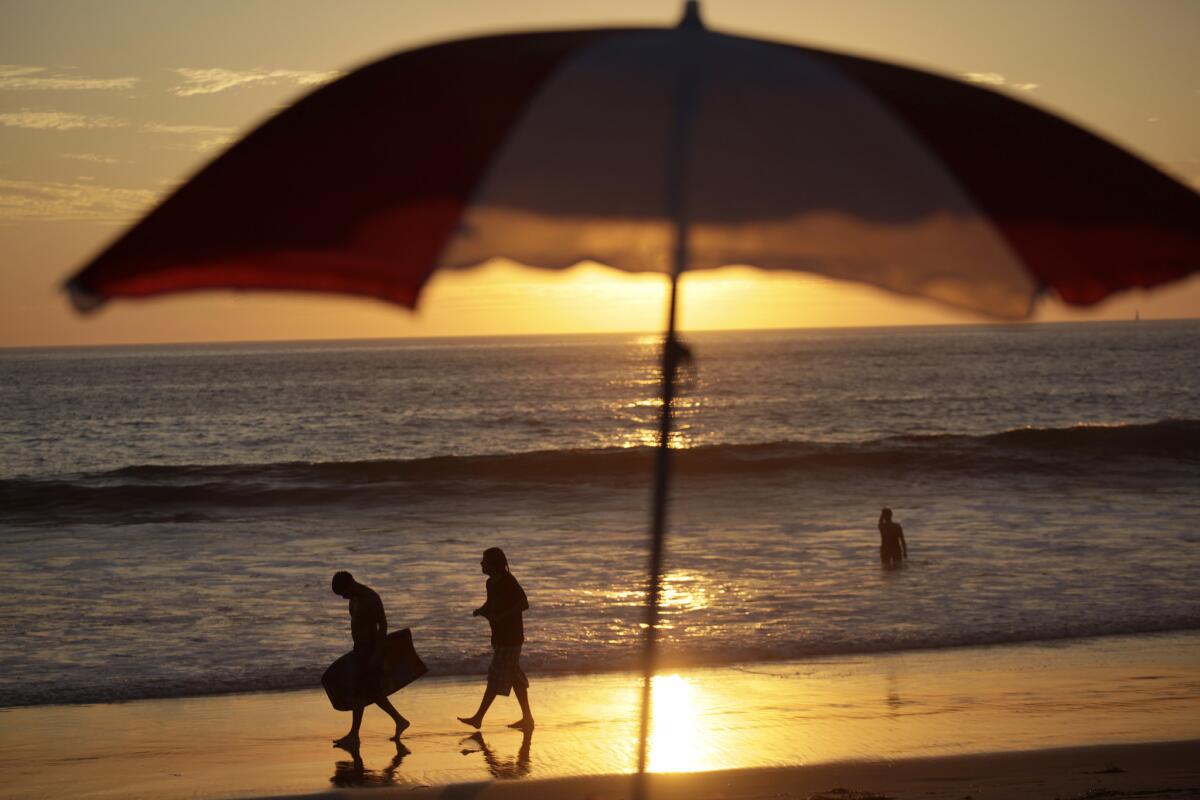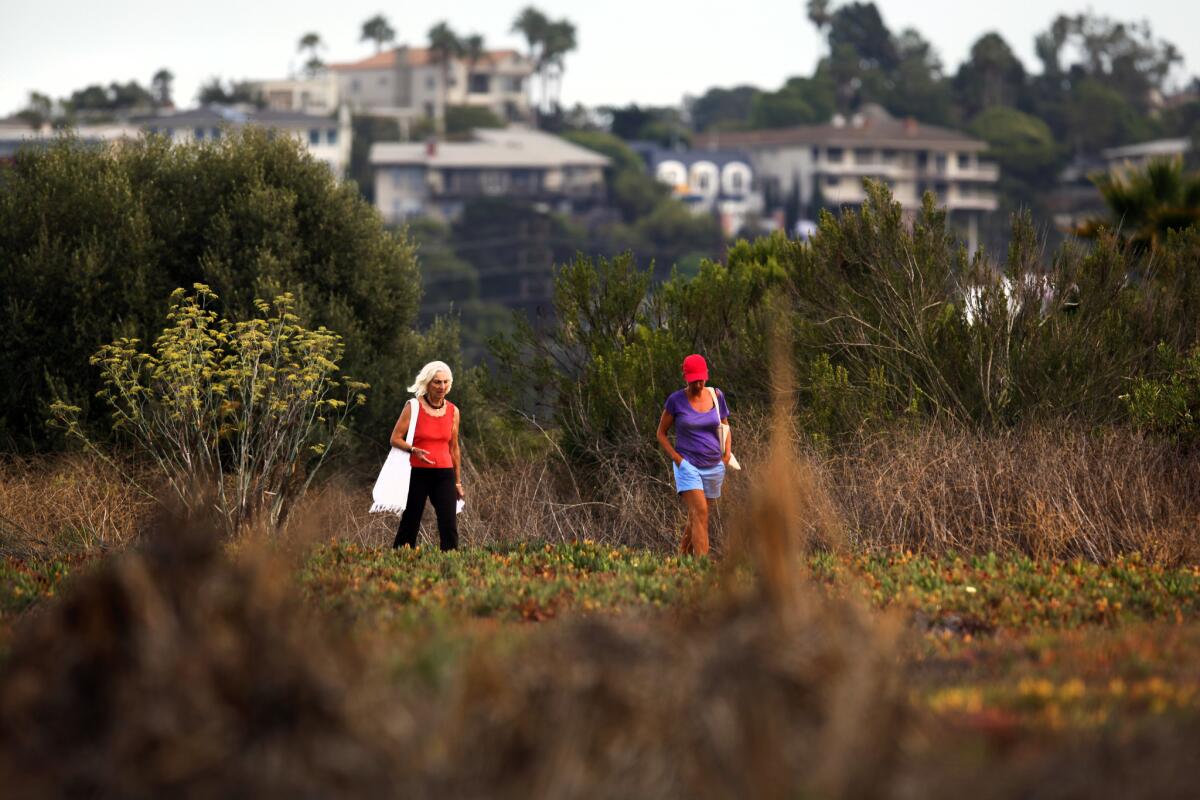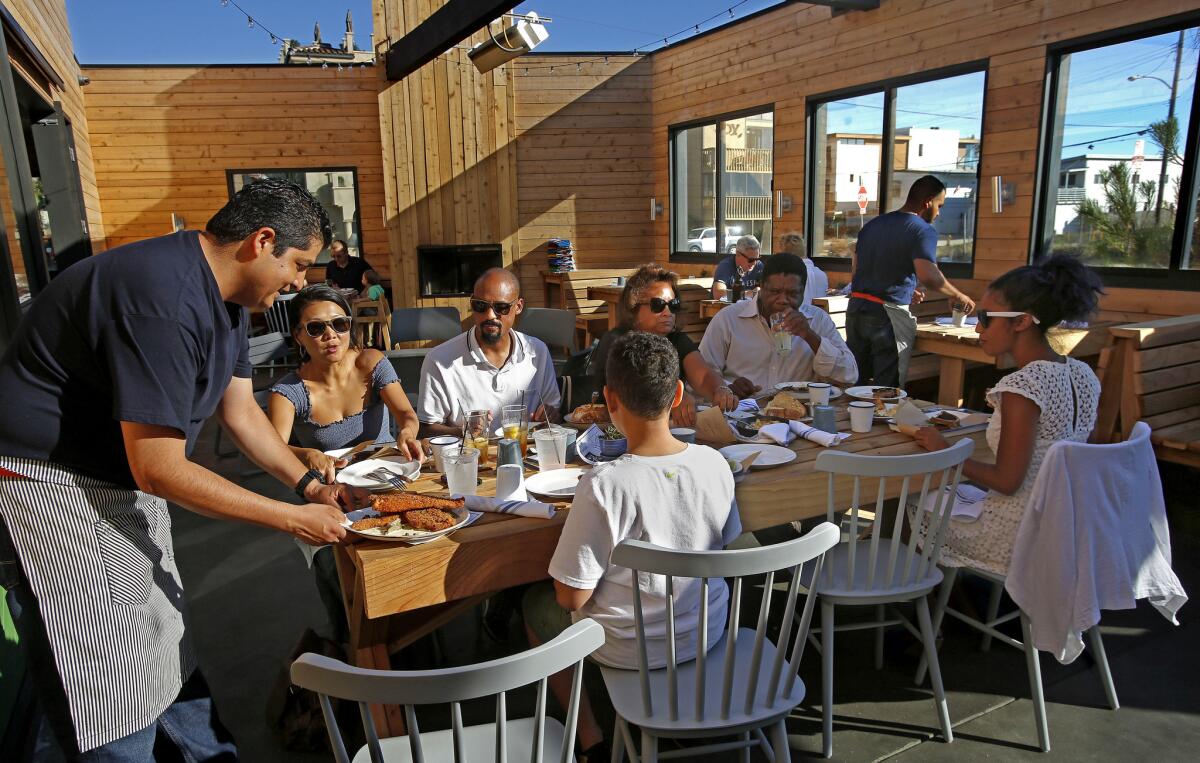Neighborhood Spotlight: Playa del Rey is a âsleeping giantâ thatâs gotten its wake-up call

Way out on the far western reaches of Culver Boulevard â past the Ballona marshlands, where the asphalt ends and the few meager acres of beach sand dunes left in Los Angeles begin â is a small coastal enclave with a history of perseverance that befits its grandiose name: Playa del Rey, the beach of the king.
Before a cataclysmic flash flood in 1820, when the Los Angeles River changed its course to empty into the ocean near San Pedro, Playa was the swampy mouth of the rio, whose waters made the surrounding coastal plain prime grazing land for early European settlers.
Luckily for the herds of thirsty cattle, and the massive colonies of waterfowl that made their homes in the marshes, Ballona Creek continued to flow down the riverâs ancient channel, eventually forming a lagoon that would become the center of the action in Playa in the late 1800s.

Thatâs when Playa del Rey joined communities up and down the coast of Santa Monica Bay in a heated competition to become L.A.âs predominant port in one of two ways: building a long wharf, or dredging. Playa choose the latter and launched a development effort that got as far as building a rail line out to the lagoon, before a shortage of money forced investors to abandon their plan.
The little settlementâs next run at the big time came a few years later when boosters jumped on the beach-resort craze that made neighboring Venice of America a worldwide draw. They turned the lagoon into a swimming plunge, built a grand hotel and constructed a variety of attractions designed to lure travelers out to what was once a swampy hinterland, including a motor drome and an incline railway.
The good times lasted until the 1920s, when the luxurious Hotel del Rey burned to the ground and the resort trade dried up.
For its next act, Playa went all in on residential development, riding a series of housing booms to greater and greater urbanization. The channelization of Ballona Creek in the 1930s accelerated this transition by eliminating much of the coastal marshland and reducing the sprawling Del Rey Lagoon to a fraction of its original size.
Today, Playa del Rey retains much of the feel of a small beach town, surrounded by towering bluffs on the east, Ballona Creek on the north and LAX to the south. And even if itâs not quite kingly, itâs still a great place to sit at the foot of the dunes and watch the sunset.

Neighborhood highlights:
A beach town for the rest of us: Playa has its own delightfully down-to-earth vibe, with plenty of old-school dives and restaurants to hang out in, and zero pretentious airs.
A feast for the senses: In Playa youâll see planes taking off from LAX, an endless procession of sailboats coming and going from Marina del Rey and, after sunset, massive cargo ships lying at anchor.
Rest and relaxation: Plentiful street parking, the Marvin Braude Bike Trail, the Del Rey Lagoon Park, and, of course, the Pacific Ocean, make Playa a great place to spend a warm summer day.
Neighborhood challenges:
A seaside racket: An important thing to remember about Playa would be that LAX is right next door, except you could never forget that LAX is next door because you will hear it. All day. All night. Always.
Expert insight:
Tom Corte, a partner at Corte Wright in Playa del Rey, said the neighborhood is in the midst of a âhuge gentrificationâ thanks in part to the rise of the L.A. tech scene along the beach.
âIt was the most underpriced, orphaned community on the Westside,â the real estate agent said. âNow all of a sudden, we are on the map. This has been a sleeping giant, and it has been awakened by forces around the neighborhood.â
For now, Playa del Rey continues to be relatively affordable compared with its beachside neighbors, such as Marina del Rey and Venice. But Corte expects that to change soon.
âSellers perceive the urgency to buy here, so theyâre waiting for that big push in price,â he said.
Market snapshot:
In the 90293 ZIP Code, there were no single-family home sales in February, according to CoreLogic. There were 16 condominium sales for a median price of $641,000, a 23.9% increase year over year.
Report card:
Within the boundaries of Playa del Rey is Paseo del Rey Fundamental, a public alternative school, which scored 864 out of 1,000 in the 2013 Academic Performance Index.
Nearby schools include Richmond Street Elementary and Loyola Village Elementary, which had scores of 910 and 816, respectively. El Segundo High scored 880, and Westchester Enriched Sciences Magnets: Health & Sports Medicine had a score of 704.
MORE FROM HOT PROPERTY
Estate makes the most of its spectacular Carpinteria setting
Frank Grillo and Wendy Moniz snag an ocean-view spot in Pacific Palisades
Former Angel Brad Fullmer lists two-floor condo in Brentwood for $1.6 million
More to Read
Sign up for Essential California
The most important California stories and recommendations in your inbox every morning.
You may occasionally receive promotional content from the Los Angeles Times.






